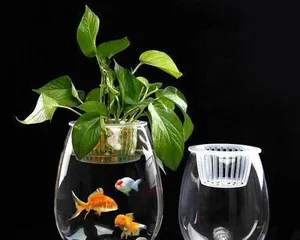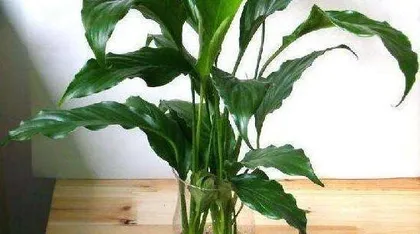Abstract:
Pilea is a beautiful perennial shrub plant. After long-term cultivation and research, it has been discovered that pilea can be grown in water culture, which greatly facilitates planting and maintenance for growers. Next, we will introduce you to the hydroponic care methods and precautions for pilea in detail.
Pilea is a beautiful perennial shrub plant. After long-term cultivation and research, it has been discovered that pilea can be grown in water culture, which greatly facilitates planting and maintenance for growers. Next, we will introduce you to the hydroponic care methods and precautions for pilea in detail.

Selecting Appropriate Hydroponic Equipment
Choose transparent glass or plastic containers as hydroponic pots, and prepare some substrates such as peat moss and vermiculite powder, along with an appropriate amount of nutrient solution.
Choosing Suitable Nutrient Solution
The nutrient solution should have appropriate concentration and composition. You can use commercially available specialized nutrient solutions for pilea, or formulate your own nutrient solution suitable for pilea.

Preparing Good Substrate
Peat moss and vermiculite are both suitable substrates for pilea growth. These substrates can be mixed in proportion and then added with an appropriate amount of nutrient solution to create a substrate suitable for pilea growth.
Soaking Substrate and Pilea Roots
Soak the pilea roots in warm water to soften them and clean them thoroughly, then insert the roots into the substrate and gently compact it.
Appropriate Water Level and Temperature
When growing pilea hydroponically, maintain appropriate water level and temperature. The water level should not be too high or too low, generally about 1/3 to 1/2 of the pot height. The temperature should be controlled between 15°C and 30°C.

Maintaining Light Exposure
Pilea needs sufficient light to grow well. It should be placed in bright indoor locations or on balconies, ensuring at least 6 hours of sunlight exposure daily.
Preventing Over-Fertilization
Although nutrient solution is essential, excessive fertilization can lead to root blockage, plant wilting, and pest/disease problems. Therefore, control the concentration and frequency of the nutrient solution properly.
Regularly Changing Water and Nutrient Solution
Regularly changing water and nutrient solution can prevent water contamination and nutrient deficiency. Generally, change it every 1-2 weeks.
Timely Cleaning of Hydroponic Equipment
Keeping hydroponic equipment clean can prevent pest and disease growth. Clean the pots and tools when changing water and nutrient solution.
Paying Attention to Water Quality and pH Value
Pilea growth requires appropriate pH value and water quality. Regularly test water quality and pH value and adjust accordingly.
Ensuring Air Circulation
Air circulation promotes pilea respiration and photosynthesis. Maintain proper ventilation environment.
Avoiding Moving and Bumping
Moving and bumping can damage pilea, so protect the pots and plants carefully.
Avoiding Large Temperature Changes
Pilea is sensitive to temperature changes, so avoid environments with large temperature fluctuations.
Timely Pruning and Pinching
Pruning promotes pilea growth and aesthetics, while pinching controls its height and branching.
Through the above introduction, we can see that pilea can be grown in water culture, and hydroponic growth is more convenient and simple. However, many precautions must be taken during hydroponic care. Only correct methods and techniques can ensure healthy growth of pilea.